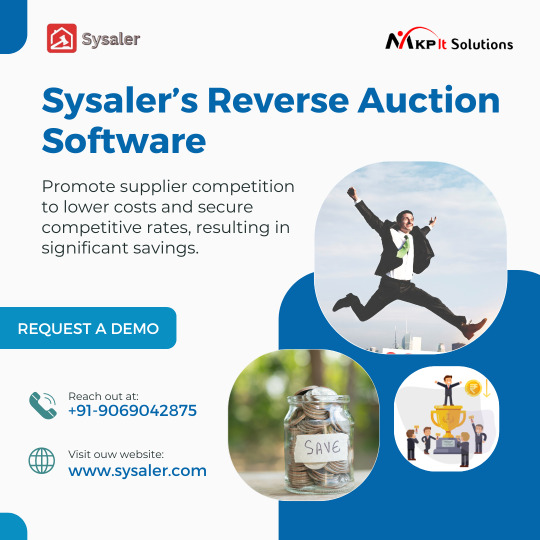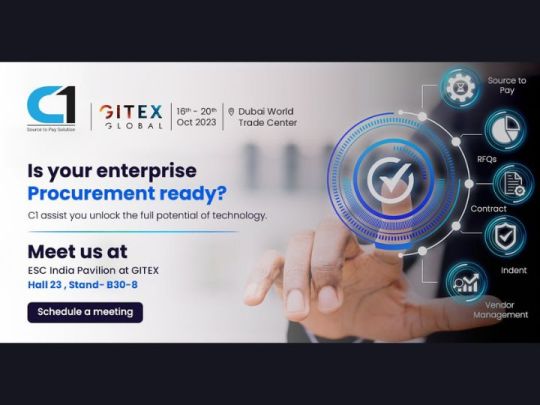#SourceToPay
Explore tagged Tumblr posts
Text
Why ERP Isn’t Enough: Bridging Strategic Gaps in Source-to-Pay
Why ERP Alone No Longer Delivers — Six Strategic Gaps in Source-to-Pay Performance
Enterprise Resource Planning systems have served as the backbone of organizational efficiency for decades. They integrate core business processes including finance, human resources, procurement, and inventory management. For many businesses, ERP implementation has represented a significant investment and a move toward operational control. But as global markets evolve, so do the expectations of enterprise procurement.

Today, Source-to-Pay processes have become increasingly sophisticated. Procurement leaders are tasked with far more than cost control. They must now manage risk, ensure compliance, drive sustainability, and build supplier resilience. Traditional ERP systems, while essential, are no longer enough to meet these demands. They are falling behind modern Source-to-Pay platforms that are purpose-built to handle the complexity, agility, and intelligence required in contemporary procurement environments.
On behalf of BusinessInfoPro, here are six critical reasons your ERP system may be falling short in delivering comprehensive S2P capabilities.
1. ERPs Are Designed for Transactions, Not Strategic Sourcing
ERP systems were initially developed to manage transactional processes. This includes issuing purchase orders, processing invoices, and handling payments. While efficient for basic procurement functions, they lack the strategic depth required for effective sourcing.
Modern sourcing involves supplier discovery, competitive bidding, cost modeling, market benchmarking, and scenario planning. These elements require real-time data, collaboration tools, and advanced analytics. Source-to-Pay platforms deliver these capabilities, enabling procurement professionals to make data-driven decisions that impact the bottom line.
ERP systems are often limited to repetitive, rule-based tasks and lack the intelligence to support dynamic sourcing strategies. They are reactive by design, while S2P platforms offer proactive functionality that can reduce costs, optimize supplier relationships, and improve outcomes.
2. Supplier Management in ERP Lacks Visibility and Collaboration
Managing suppliers in ERP systems is typically confined to maintaining a supplier master file. This includes basic vendor information such as name, address, and tax details. There is little to no visibility into supplier performance, risk profile, diversity metrics, or sustainability alignment.
S2P platforms, on the other hand, provide end-to-end Supplier Lifecycle Management. This includes onboarding workflows, automated risk assessments, performance monitoring, and integration with third-party data sources. Procurement teams can track supplier compliance, review delivery performance, and assess ethical practices in real time.
This level of insight supports strategic supplier segmentation and long-term partnership development. Without it, ERP users are forced to manage supplier-related processes across fragmented tools and spreadsheets, leading to delays, inefficiencies, and increased risk.
3. Limited Flexibility to Adapt Procurement Workflows
Every organization has unique procurement requirements. Depending on geography, category, or compliance obligations, the workflows associated with approvals, sourcing events, or contract reviews may differ significantly. Traditional ERP systems are not built with this level of flexibility.
Customizing workflows in ERP systems can be complex and expensive. Changes may require extensive IT support and come with the risk of disrupting other system modules. This rigid structure becomes a bottleneck, especially for fast-growing or global companies that need to adapt quickly to changing business needs.
S2P platforms offer modular, configurable environments. Procurement leaders can adjust workflows, set rule-based approvals, and implement region-specific compliance checks with minimal technical support. This agility is essential for organizations operating across multiple markets or industries where procurement conditions can change overnight.
4. Poor Spend Visibility and Limited Procurement Analytics
One of the biggest limitations of ERP systems is the lack of real-time, actionable insights. While ERP software can store procurement and financial data, extracting meaningful information from that data is difficult. Reporting features are often static and focused on historical transactions.
In contrast, Source-to-Pay solutions provide advanced spend analytics, dynamic dashboards, and predictive intelligence. These platforms help organizations identify maverick spending, supplier consolidation opportunities, and areas for cost savings. They also support detailed segmentation by supplier, category, geography, and business unit.
With real-time access to procurement data, decision-makers can proactively identify trends and act swiftly. In today’s fast-paced environment, relying on delayed or limited insights from ERP systems can result in missed opportunities and inefficient spending.
5. Disconnected Contract Management Results in Lost Value
Contracts are a central component of the procurement process, yet they are often poorly integrated into ERP systems. Contracts may be stored in separate systems, or worse, in shared drives without proper tracking or alerts. This leads to problems like missed renewals, non-compliance with agreed terms, and unfulfilled service-level commitments.
S2P platforms include fully integrated Contract Lifecycle Management tools. These tools automate the creation, negotiation, approval, and renewal of contracts. They include version control, obligation tracking, and notifications for key milestones. More importantly, contracts are tied directly to supplier performance, sourcing events, and spend analytics.
The integration of contracts into the procurement process ensures organizations maximize negotiated value and stay compliant with regulatory and internal policies. Without this capability, ERP systems leave too much value untapped and expose the business to unnecessary risk.
6. Inability to Support ESG and Regulatory Compliance Goals
Environmental, social, and governance initiatives are rapidly becoming a key focus for procurement functions. Businesses must now consider sustainability, diversity, ethics, and compliance as part of their sourcing criteria. Traditional ERP systems were never designed with these priorities in mind.
Source-to-Pay platforms provide dedicated ESG tracking tools and compliance frameworks. They integrate with global databases to monitor supplier certifications, environmental impact, and labor practices. Procurement leaders can generate compliance reports, set ESG-related goals, and track supplier alignment against these objectives.
This capability is not only beneficial for reporting and auditing purposes but is also becoming a requirement for doing business in many regulated industries. Organizations that continue to rely solely on ERP systems risk falling short of both internal and external expectations related to responsible sourcing and corporate accountability.
As the global procurement function matures, the technology that supports it must evolve in tandem. ERP systems continue to play a foundational role in business operations, but they are no longer sufficient to manage procurement as a strategic function. The integration of Source-to-Pay platforms enhances the value of ERP investments by addressing critical gaps in sourcing intelligence, supplier management, compliance, and analytics.
Organizations that aim to stay competitive in a rapidly shifting market must evaluate where their ERP ends and where specialized S2P tools begin. Recognizing these limits is the first step toward building a more agile, strategic, and insight-driven procurement function.
Read Full Article : https://businessinfopro.com/6-reasons-why-your-erp-falls-short-of-s2p-capabilities/
Visit Now: https://businessinfopro.com/
0 notes
Text
Sysaler's Reverse Auction Software
Sysaler Auction software is designed to simplify procurement-related processes- B2B space, both for buyers and sellers Turn your procurement process into a savings generator and efficiency driver with sysaler procurement software To know more about e-auction related services, visit our website: https://www.sysaler.com

#sysaler#eauction#procurement#enegotiations#cloudbasedsolutions#cloudbasedsoftware#procurementprocess#businesssupport#b2b#auction#B2BSoftware#ForwardAuction#eprocurementprocess#e_sourcing#sourcetopay#automation#software#supplychain#smallbusiness#technology#quality#sourcing#ProcurementTips
0 notes
Text

C1 India Pvt Ltd Takes Center Stage at GITEX GLOBAL Largest Tech & Startup Show in the World 2023
We're ready to showcase our cutting-edge #sourcetopay solutions in GITEX Global 2023, the world's largest tech event!
At our booth in the ESC India Pavilion (Hall 23, Stand- H23-B30-8), we'll be showcasing our cutting-edge solutions: #sourcetopay, #procuretopay, #vendormanagement, #contractmanagement, #warehousemanagement, #suppliermanagement, #tendermanagement, and #eAuctions.
Explore how our solutions can transform your business.
To know us more: https://lnkd.in/d968wicR For enquiries: [email protected]
Stay tuned for more updates as we gear up for this incredible event. See you at GITEX Global 2023!
#GITEXGlobal#TechInnovation#C1Solutions#c1atgitexglobal#giteximpact#aieverything#futureurbanism
0 notes
Text
Redefining procurement leader’s role in the new age of Volatility
Looking to navigate the constantly shifting landscape of modern business, procurement leaders must adapt to an ever-evolving role.
#prokraya#procurementleaders#procurement#procurementsoftware#procuretopay#esourcing#procurementmanagement#digitaltransformation#sourcetopay#supplychainmanagement#procurementmanager
0 notes
Text
Blockchain Technology for Supply Chain
Blockchain Technology for Supply Chain #blockchain #supplychain #smartcontracts #artificialintelligence #machinelearning #iot #bitcoin #logistics #procurement #p2p #s2p #sourcing #procuretopay #sourcetopay #apics #cscp #cips #cpsm #cltd #cpim
Covid-19 pandemic is the term of the year 2020 and the most widely used word across all content starting from articles, publications, podcasts, videos, and webinars. It has challenged all conventional best practices of the world. The entire world’s resources mainly manpower was locked in-home quarantine and everybody understood the need for digitalization rather we can say there is a serious hype…

View On WordPress
0 notes
Text
Summarizing an amazing year in the history of @mediusgroup - growth, innovation, customer success... and a new source to pay suite! Click to read the full press release #APautomation #sourcetopay #news https://t.co/aCxoD505j0 https://t.co/OqU8zNd6z3
Summarizing an amazing year in the history of @mediusgroup - growth, innovation, customer success... and a new source to pay suite! Click to read the full press release #APautomation #sourcetopay #newshttps://t.co/aCxoD505j0 pic.twitter.com/OqU8zNd6z3
— Medius (@mediusgroup) February 20, 2020
0 notes
Link
0 notes
Text
Global SourcetoPay Outsourcing Market Research Insights 2018-2023- Accenture, Capgemini, GEP, Infosys, Xchanging, Aegis, ATS Group, Capgemini, CGI, Corbus, CSC, DSSI, IBM, HP, - Bitcoin Journal https://t.co/swANmdDO7I
Embed code not available
from Twitter https://twitter.com/performatel January 09, 2019 at 10:11PM http://twitter.com/performatel/status/1083275124764262400
0 notes
Link
0 notes
Text
0 notes
Text

No. 1 Auction Market Platform To Host Your Own Auction Sysaler is a platform that provides opportunity to create self auction for client either subscription based model or Enterprise Model.
Best Auction Software Company In India
#Procuregenie#ReverseAuctions#CostSavings#ValuePropositions#procure#Eprocurement#digitaltransformation#eprocurementprocess#e_sourcing#sourcetopay#automation#software#supplychain#smallbusiness#technology#quality#sourcing#ProcurementTips#Sysaler
1 note
·
View note
Text
Top 10 Common Accounts Payable Problems and Solutions
Are you struggling with Accounts Payable (AP) processes? This article will explore the common AP problems and offer solutions to improve your AP efficiency.
#prokraya#procurementleaders#procurement#procurementsoftware#procuretopay#esourcing#procurementmanagement#digitaltransformation#sourcetopay#supplychainmanagement#procurementmanager
0 notes
Text
An essential guide to the key pillars of Third-Party Risk Management
Third-party risk management is crucial for businesses. Learn about the key pillars of third-party risk management to protect your organization from potential risks.
#prokraya#procurementleaders#procurement#procurementsoftware#procuretopay#esourcing#procurementmanagement#digitaltransformation#sourcetopay#supplychainmanagement#procurementmanager
0 notes
Text
Strategic Sourcing: What It Is and How It Can Benefit Your Business
Meta: Achieve cost savings, mitigate risks, and improve supplier relationships by revamping your procurement process with strategic sourcing using our expert guide.
#prokraya#procurementleaders#procurement#procurementsoftware#procuretopay#esourcing#procurementmanagement#digitaltransformation#sourcetopay#supplychainmanagement#procurementmanager
0 notes
Text
The Future of Procurement: Trends and Predictions for 2023 and Beyond
Explore the latest trends shaping the spend, supply and procurement industry. Learn how to drive savings, improve supplier relationships, and more. https://prokraya.com/blog-details/the-future-of-procurement-trends-and-predictions-for-2023-and-beyond
#prokraya#procurement#procurementsoftware#procuretopay#esourcing#procurementmanagement#digitaltransformation#sourcetopay#supplychainmanagement
0 notes